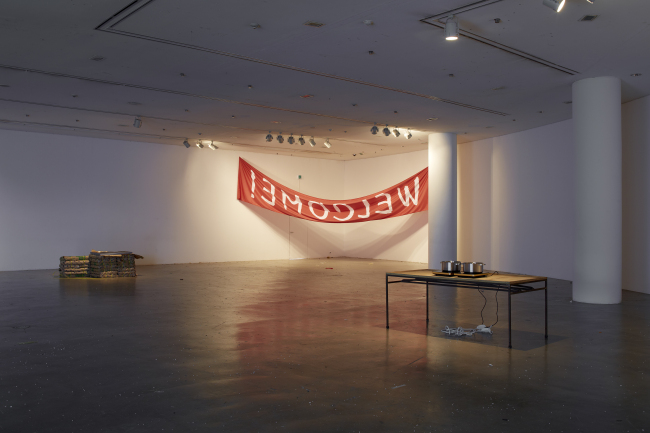Contemporary art has become borderless, with visual presentations coming to focus less on national identity and more on individuality. In what appears to be an attempt to go against this trend, Art Sonje Center is seeking to explore the national identities of Asian artists whose works deal with historical, social or ideological issues of their countries.
The broad theme of national identity is explored in the exhibition of 12 artists from China, Korea, Japan and Taiwan. Put together by curators from the four countries, the show sheds light on the historical and political contexts of the differences that divide East Asian countries.
Taiwanese artist Chen Chieh-hen presents evidence that a U.S.-Taiwan spy agency was operated by the two governments in the 1950s under the guise of Western Enterprise Inc. The artist found this evidence in the keepsakes of his father, who was a member of the Anti-Communist National Salvation Army, a force created by Western Enterprises to launch a surprise attack on mainland China. In a video, Chen recreates fictional scenes of the spy agency’s work.
Japanese artist Takamine Tadasu explores Japanese identity through an installation work that features slogans, catchphrases and images that the country has used to promote itself, from the post-war era to the present. He is also presenting the video “Japan Syndrome ― Berlin Version,” which features voices and images of people protesting against nuclear energy in front of Kyoto City Hall after the Fukushima nuclear disaster, which the artist views as “resistance to the social pressure that explains Japanese identity.”
 |
| Heman Chong exhibition. (Art Sonje Center) |
Chinese artist Leung Chi Wo is presenting a conceptual audio-video work based on an excerpt from a Chinese history textbook translated into Japanese. The artist was inspired by the fact that Chinese and Japanese use the same kanji letters. Through the work, he examined differences between the two countries’ views of their history. He had a Japanese man read every syllable except for the kanji and a Chinese woman read the kanji in Cantonese.
In a stark contrast, a solo exhibition of another East Asian artist, currently underway at the same gallery, illustrates how art transcends borders and race.
Singaporean artist Heman Chong uses familiar objects such as fire extinguishers, a placard and a copy of an art magazine.
“These are objects we can find in our everyday lives. But for me, if I put them in another way, they become a possibility ― a way of accessing the world in a different way. Like how sometimes you see a tree (that has always been there) and notice something different about it on your way to work. This is the moment I want to capture (in this exhibition),” Chong said in the exhibition preview on Thursday.
Another of his attempts to discover new meaning in everyday life involves reading the spam mail he gets. Chong said he found elements of romance in an email from a woman named “Zara” and painted the text on a canvas.
The artist defies the stereotypical white cube gallery setting, saying that it restricts viewers’ behavior in the name of museum etiquette. A corner of his exhibition is designated as a smoking area, with ashtrays and pots placed on tables for those who feel the urge to smoke while viewing his works.
He had seen many guests at exhibition openings spend too much time smoking outside, the artist explained.
The exhibitions continue through March 29 at Art Sonje Center in Seoul. For more information, call (02) 733-8945.
By Lee Woo-young (wylee@heraldcorp.com)



